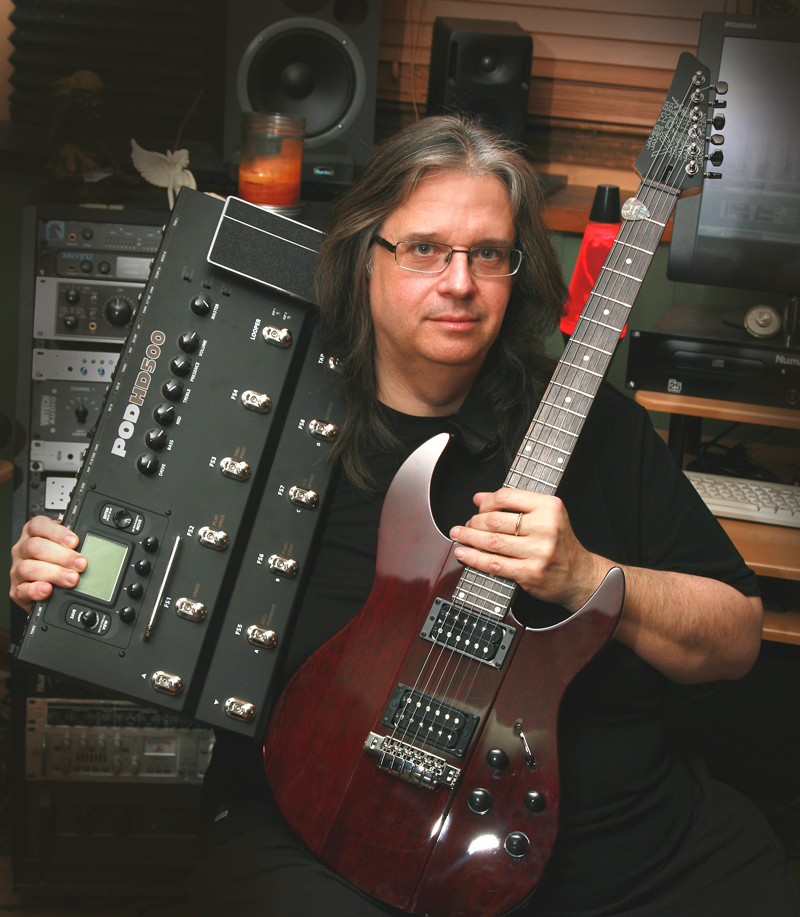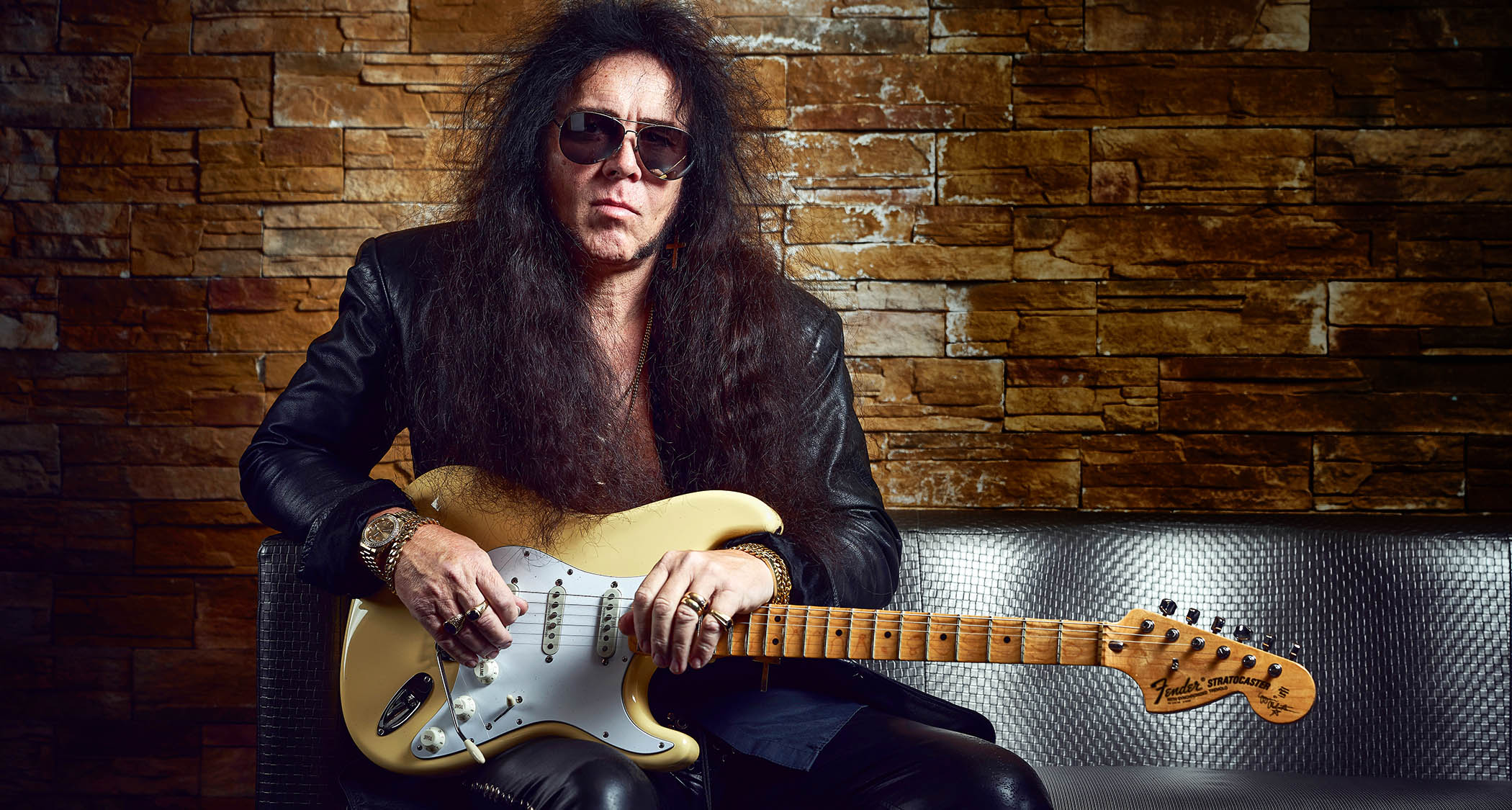Session Guitar: How the Line 6 JTV-89 Guitar and HD500 Multi-Effects Processor Changed My Studio Life

First of all, let me stress this:
SESSION GUYS, PAY ATTENTION!
I often get asked about what gear I use in the studio. I have addressed this topic in my column in the past. However, a new guitar has been added to the bunch, Combined with my somewhat-new Line 6 Pod HD500 multi-effects processor, it has made my studio life happier than ever! I'm talking about the Line 6 JTV-89 modeling guitar combined with the HD500.
I bought the HD500 last year, and I've mentioned how pleased I am with it. Overjoyed is more like it. It has become a part of my right arm, an extension of me. I learn more about it every day.
Well, a few months ago, I got the JTV-89 guitar. I thought it might have been a stupid move. I needed another guitar like I needed ... well, another guitar! I have so many, and I feel guilty when I don't play them as it is! And this one came with a warning: I was warned to give it a few months. I wasn't sure why at the time, but OK.
The guitar is beautifully made. It's designed by James Tyler. Blood Red. Fast, modern-feel neck. I changed the strings to 9's and off I went. It played like a dream. How did it sound? Excellent but confusing at first. The models certainly were varied and incredible.
But the hard part was wrapping my mind around the fact that I was hearing a Strat or Tele or Les Paul or a bunch of others, and seeing and feeling this other guitar in my hands! And it certainly took a while to get used to dialing through all the variations! Getting used to the strengths and weaknesses of one guitar is a process unto itself, but getting used to 28, or 29 if you count the guitar, damn!
Get The Pick Newsletter
All the latest guitar news, interviews, lessons, reviews, deals and more, direct to your inbox!
I will skip ahead. I had days of frustration. I had days of joy. But when I started combining it with the HD-500 and found some favorites and where they were on the guitar, there was no turning back! I was hooked. I was not abandoning my other guitars. But this gave me creative freedom to do my job better, faster and more creatively than ever before. Allow me to demonstrate with a pair of scenarios.
SCENE 1: Old days of doing a session: As I would lay down tracks, I would start thinking that maybe the chosen guitar wasn't right for the song. This happens often. Maybe a Strat or Tele would be better than a Paul or 335. So I would get up and switch guitars. Check the tuning. Listen to the amp. Or change the amp. Or mic. Or effects. Or cabinet. Or ALL OF THE ABOVE! Vibe gone. Gotta get back into it. ARE YOU GETTING THIS?
SCENE 2: Sound not working? Change the knob on the guitar through my favorites. Guitar still in tune. Still playing the song. Not happy with the amp? Keep the amp and add another amp in stereo and dial in new mics. Or cab. Or change the amp. Or pedal. Dial through my favorites. It has become second nature already, and I am making most of these changes on an intuitive level. No thinking, Just doing. What is happening is I am able to stay in the creative mode without gear changes stopping the process. I am staying in the right brain. The gear is not getting in my way. The gear is aiding the process. And subsequently, I am doing more for my clients than before!
When I get called to add guitar to a song, I am expected to give the client all they ask for. Sometimes the parts are written. Sometimes described. That is what is expected. However, I can now offer the unexpected! Things they didn't think of adding. Why not add some chimey 12 strings to the chorus! Or a seriously new sound to the second verse! Ear candy! Keyboard players have been doing this for years. Now we can.
The result? Faster work, great quality, More flexibility. And the price for this magic is nothing compared to a good amp, a good guitar and a few pedals. The bang for the buck seriously equates to a no-brainer. It does it all and more for me and does it well.
I am limited on space here. How can I discuss the tuning options, high-gain custom models, building chains in the HD, etc., in one blog post? I can't. So I've included the video below. First I talk about the setup. At around the 6:50 mark, I start demonstrating sounds. I'll be getting into more detail in future videos and blog posts. For now, I will always love all my guitars, but when I go to work, the first guitar and modeler will be the JTV-89 and HD500.
Till next time …
Ron Zabrocki on Ron Zabrocki: I’m a session guitarist from New York, now living in Connecticut. I started playing at age 6, sight reading right off the bat. That’s how I was taught, so I just believed everyone started that way! I could pretty much sight read anything within a few years, and that aided me in becoming a session guy later in life. I took lessons from anyone I could and was fortunate enough to have some wonderful instructors, including John Scofield, Joe Pass and Alan DeMausse. I’ve played many jingle sessions, and even now I not only play them but have written a few. I’ve “ghosted” for a few people that shall remain nameless, but they get the credit and I got the money! I’ve played sessions in every style, from pop to jazz.
“I used to weigh my guitars and use the heaviest one. As I’ve got older and my back’s got worse, lighter guitars are definitely better”: Lee Malia’s Jackson signature completes a full circle 20 years in the making – and it redefines what a Jackson can be
“Sonically excellent… we found that it could be a viable substitute for our vintage 1970s pedals”: Hamstead x That Pedal Show Redwing Analogue Stereo Modulator review









